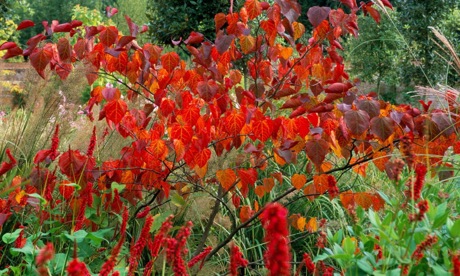I was having a chat the other day with a friend about our garden memories. I was speaking among other things about my grandmother’s vegetable garden, my failed attempt at growing pansies. On the contrary, his description sounded like a nightmare with the evocation of a long list of chores: mowing, trimming… This certainly proves the importance of garden maintenance. Garden should be associated with pleasure.
The maintenance questions should be handled during the design phase, as it is nowadays on the major constraint in such composition. During a first client meeting, I use to asking about the person who is going to take care of the garden once the redesign is completed. Does one have a gardener, and if yes, what are his competences? I am more interested by his horticultural knowledge than his ability to manoeuver any engine. If it is the client himself, is he a keen gardener and how much time can he realistically dedicate? This is even truer for a holiday’s home where maintenance will then only be very punctual.
A garden without maintenance does not exist. This is certainly because men have throughout history always be part of the garden, by definition. We should rather talk about low maintenance spaces. Consider one such example, an orchard with trees and an underlying prairie typical of the Swiss landscape. The prairie should be cut at least once a year, with evacuation of the hay on the compost heap, to mitigate the importance of grass and obtain a diversity of flowers. The trees should also be pruned once a year so as to obtain a decent harvest. This is in both cases a minimum.
Too often, at the end of the construction phase of a new home, a meager budget is left for landscaping. One then resorts to sow a lawn and plant a hedge to protect from views. This is in my opinion a very bad long-term investment, as it requires a great amount of maintenance. The lawn should be mowed up to twice a week in summer and the hedged pruned twice a year, especially if one has selected vigorous fast-growing species. From an ecological point of view, the question of green “wastes” also arises. They usually unfortunately end up in municipal recycling plant.
There is no miracle solution, rather certain ideas to follow. It is of great importance to choose plants that are adapted to the location of the garden – in terms of soil type, sun light, exposition, etc. One should also plant trees and shrubs that do not require pruning – it would actually rather be detrimental to these species – like magnolias, Japanese maple, Viburnum plicatum or Cercis Canadensis ‘Forest Pansy’. The latter is a small tree ideal for small spaces, with fantastic autumn colors that complement its spring vivid pink flowering. Furthermore, one should rather plant perennials than annuals, except maybe next to the house where a more prolific and changing flower display is desirable. In conclusion, one should rather go hand in hand with nature rather than try to force her into something.


Recent Comments